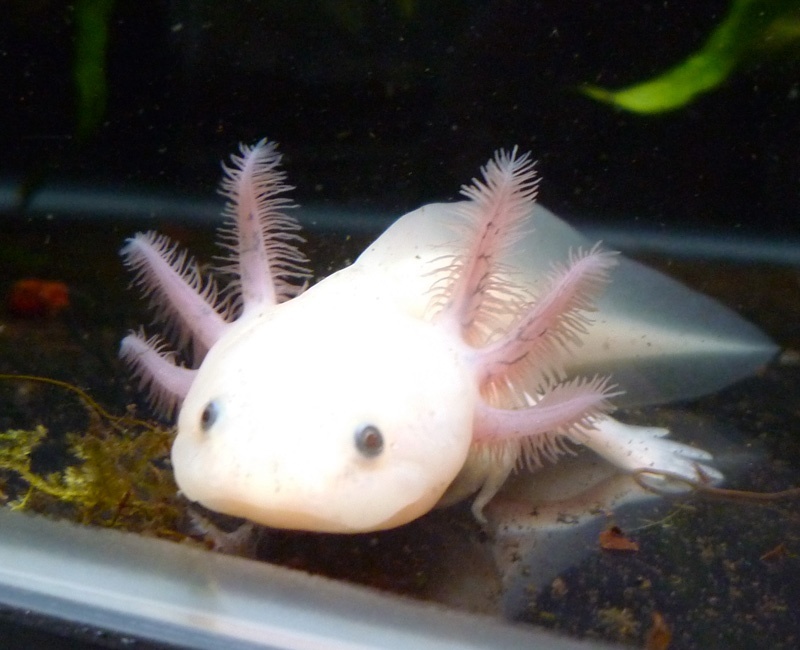 Axolotls go by different names. They have been named water dogs or water dolls, to name a few. They have unique requirements because even though it is a type of salamander, they spend most of their lives living in water and never on land. To ensure they grow as healthy amphibians, you should take note of the proper way to care for and raise them.
Axolotls go by different names. They have been named water dogs or water dolls, to name a few. They have unique requirements because even though it is a type of salamander, they spend most of their lives living in water and never on land. To ensure they grow as healthy amphibians, you should take note of the proper way to care for and raise them.
Interesting Facts about the Axolotl
The growth and development of axolotls are unique. They live their lives in the larval stage and never complete the metamorphosis. However, they are still able to breed in this stage. Experts believe that this unique evolution in axolotls is due to the low iodine levels present in the waters of the Mexican lakes from which they originated from. Researchers have done experiments that prove that added exposure to iodine aided in the metamorphosis of axolotls.
Another unique feature that axolotls have is their ability to regenerate. For this reason, they have also been the focus of scientific research.
Things to consider before purchasing your first Amphibian
Before you decide to buy and grow axolotls as pet, you need to consider a few things first. First off, someone should be around to look after and feed axolotls when you are away, especially for an extended period of time. You must also verify if you have sufficient food source to feed them.
Next, make sure you are open to the idea of feeding axolotls with live food and insects. If you are squeamish, this might be something to reconsider.
Captive Care
If you are new to caring for amphibians, axolotls are great pets to start with. They are easy to care for and are quite hardy, so they do not get ill easily. However, you need to be aware of the axolotls predatory tendencies. They will feed on other tank mates that are smaller in them in size, and that includes baby axolotls!
Housing
You need to build an aquarium to house your axolotls in. This is the ideal housing condition for this kind of pet. Make sure that the aquarium size is big enough to allow movement for such an active species. Also, secure the tank with a tight fitting lid as they might escape the tank if not installed with proper enclosure.
Water
Aside from making sure there is adequate water inside the tank, take note of the pH level in the water. Do a regular pH check on the water and the chlorine level to ensure it is ideal for axolotls to live in.
A place for your Axolotl to hide
It is part of amphibious creatures’ nature to want to hide behind logs, stones, or plants inside the tank. Hence, you should install substrates inside the tank to give them a place to hide in.
A change of scenery
Axolotls love to explore new surroundings. Hence, try to vary up the layout inside the aquarium tank so they won’t get bored easily.
Heat
Axolotls thrive in cool water conditions, just like the lakes in Mexico. Therefore, maintain the water temperature inside the tank so it does not go higher than 23-degrees Celsius. Too much heat can cause stress on the axolotl.
Feeding
Axolotls are carnivorous in nature. Therefore, they like to be fed with live insects and larvae, worms and many other similar types of food.
Lighting
Axolotls have sensitive eyes. Hence, never place them somewhere they are directly exposed to sunlight or where there are bright lights. Avoid installing lighting within the aquarium itself, too.
Cleaning
Inspect the aquarium on a daily basis. Make sure you remove any waste from the axolotl as this can be toxic when it infiltrates the water they live in. Move them to a temporary tank during the cleaning process.
Handling
Avoid handling axolotls– they do not like or respond well to it. Use a net when transporting the axolotls from one container to another.
Sexing
It is hard to determine the sex of an axolotl while still young. By roughly two years of age, you should be able to identify if an axolotl is a male or female.
Breeding
As mentioned above, most axolotls live their adult life while still in larval stage. Despite of that, they are still able to breed. The ideal age for breeding is 18 months to ensure that the axolotl is in the right size and maturity stage in order to breed. Wild axolotls typically breed during winter to spring.

 Author and long-time animal lover. Sharing knowledge on pet care through experience and the written word.
Author and long-time animal lover. Sharing knowledge on pet care through experience and the written word.